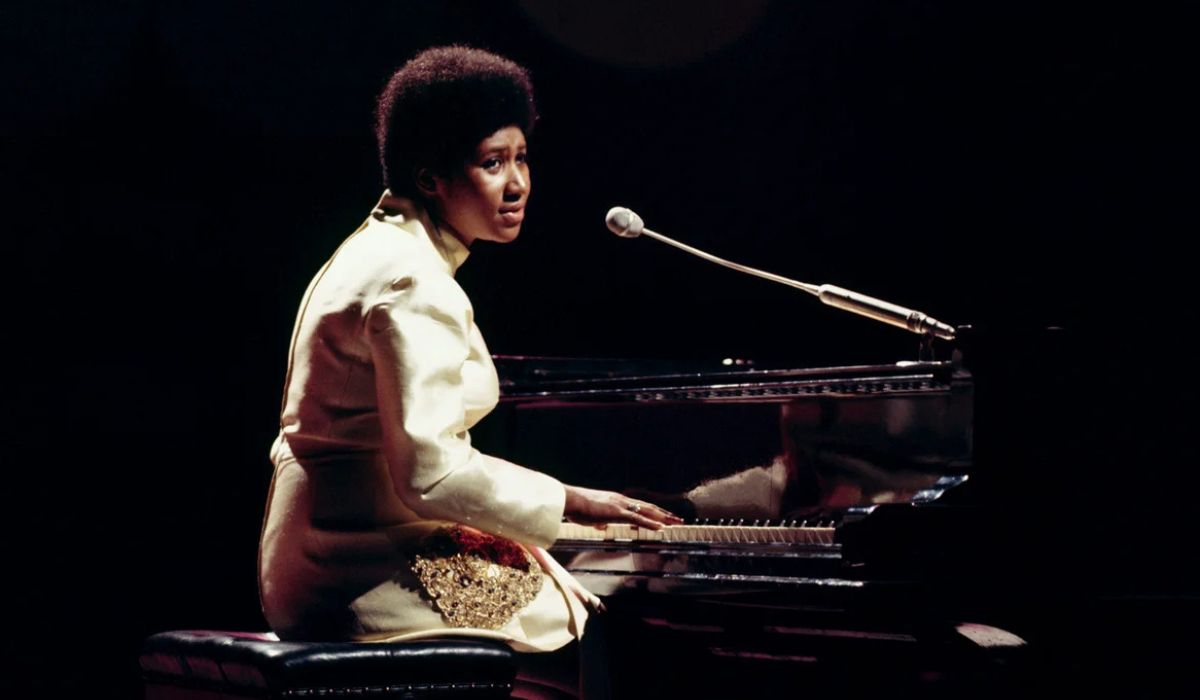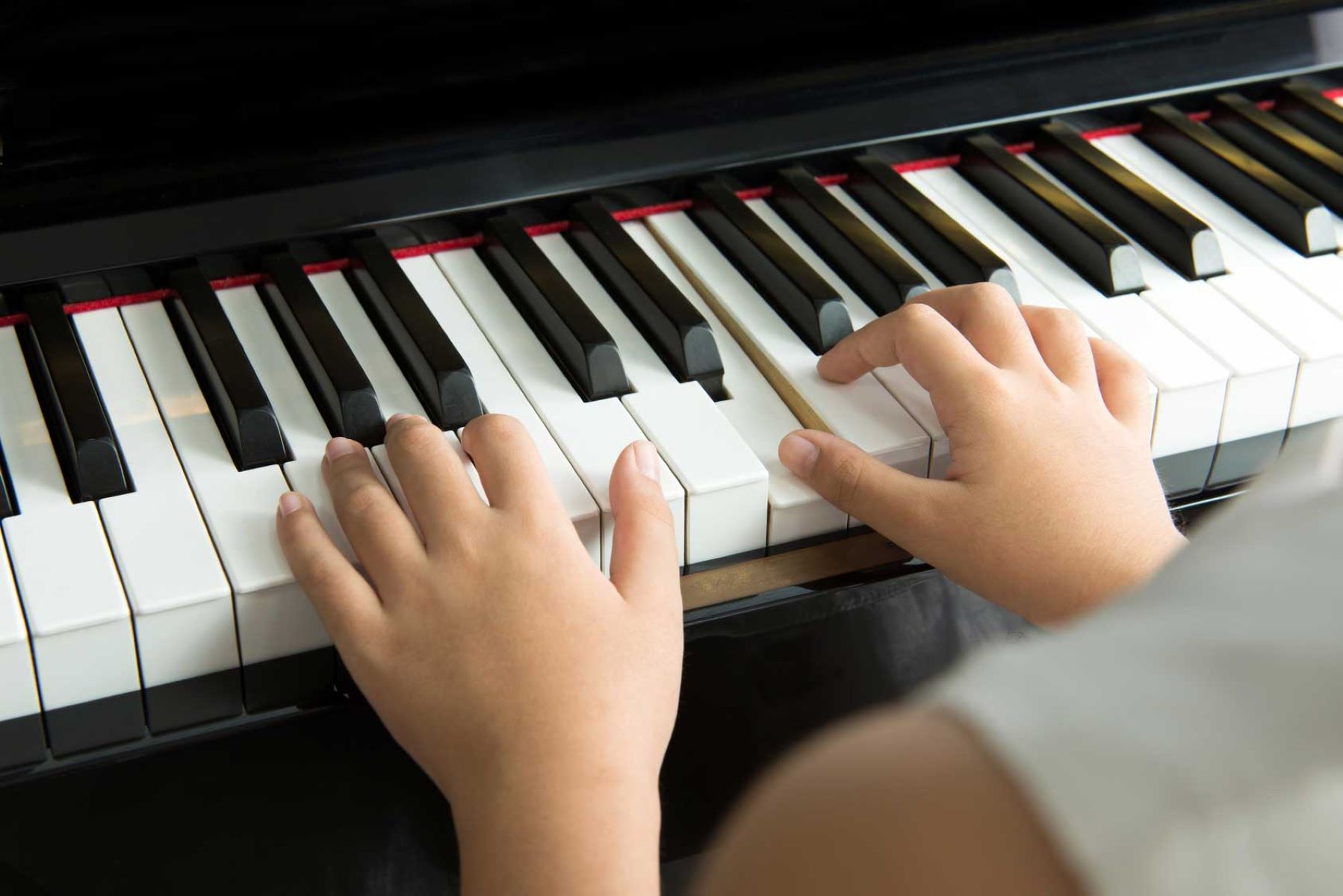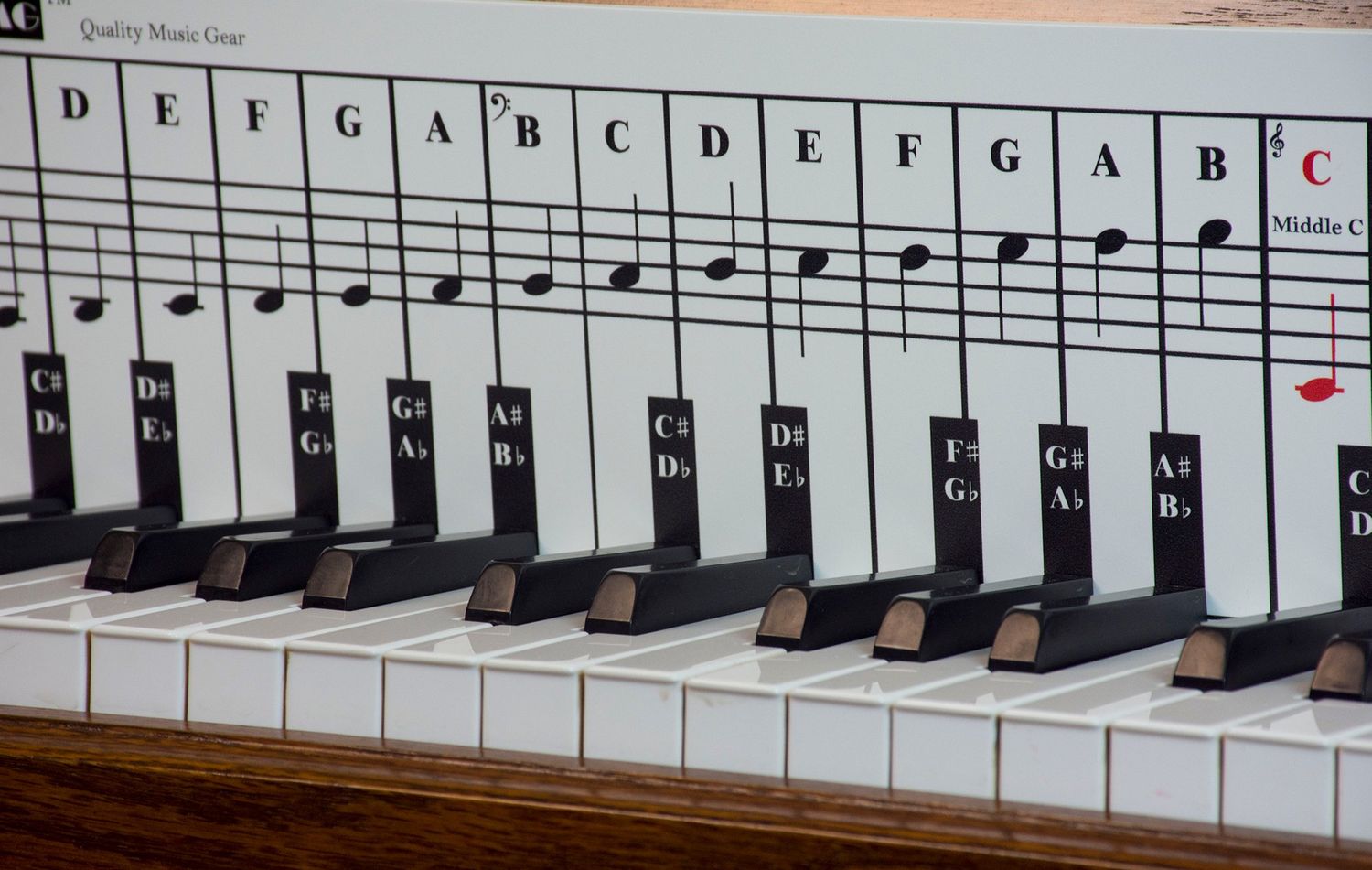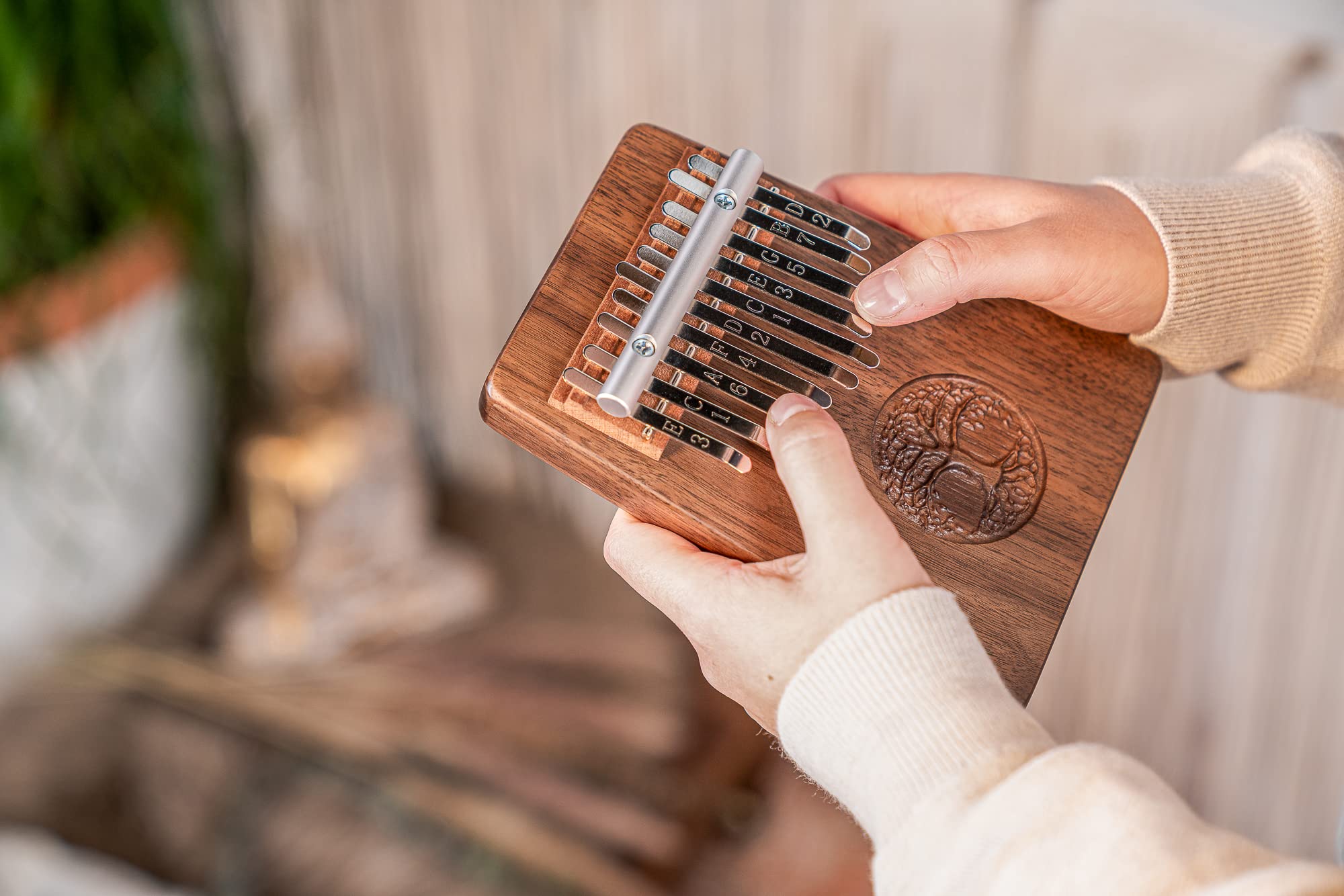Home>Instruments>Vocalist>How To Play Accompany A Vocalist On Piano


Vocalist
How To Play Accompany A Vocalist On Piano
Published: January 23, 2024
Learn how to accompany a vocalist on piano with our step-by-step guide. Enhance your musical skills and become a skilled pianist for vocal performances.
(Many of the links in this article redirect to a specific reviewed product. Your purchase of these products through affiliate links helps to generate commission for AudioLover.com, at no extra cost. Learn more)
Table of Contents
- Introduction
- Understanding Vocal Accompaniment
- Choosing the Right Songs
- Basic Chord Progressions
- Working with Melodies and Harmonies
- Syncopation and Rhythmic Patterns
- Dynamic and Expressive Playing
- Building a Connection with the Vocalist
- Adjusting to Different Musical Styles
- Tips for Effective Rehearsals
- Conclusion
Introduction
Playing piano to accompany a vocalist is a skill that adds depth, emotion, and musicality to any performance. Whether you are a seasoned pianist or just starting out, learning how to effectively accompany a vocalist can elevate the overall musical experience.
In this article, we will explore the art of vocal accompaniment on the piano, providing valuable insights and techniques to enhance your collaboration with vocalists. From understanding chord progressions to creating dynamic and expressive playing, we will cover a range of topics to help you become a proficient accompanist.
Accompanying a vocalist requires more than just playing the right chords at the right time. It involves understanding and connecting with the lyrics, melodies, and emotions conveyed through the singer’s voice. As a pianist, your role is to support and enhance the vocal performance, creating a harmonious blend that resonates with the audience.
Throughout this article, we will discuss various aspects of vocal accompaniment, including song selection, chord progressions, working with melodies and harmonies, rhythmic patterns, expressive playing, and building a connection with the vocalist. We’ll also provide tips for adjusting to different musical styles and ensuring effective rehearsals.
Whether you are accompanying a professional singer, a choir, or a friend at an open mic night, the techniques and principles you will learn in this article will help you become a more confident and skillful accompanist.
So, let’s dive into the world of vocal accompaniment on the piano and discover how you can bring out the best in both your own playing and the vocalist’s performance.
Understanding Vocal Accompaniment
Vocal accompaniment on the piano is more than just playing chords. It involves understanding the role of the pianist in supporting and enhancing the vocalist’s performance. By understanding the dynamics, phrasing, and emotions conveyed through the singer’s voice, you can create a musical connection that elevates the overall performance.
One important aspect of vocal accompaniment is understanding the lyrics. Pay attention to the message and emotions expressed in the lyrics, as they will guide your interpretation and playing. The piano should reflect and reinforce the mood and tone of the song, enhancing the singer’s delivery and adding depth to the overall performance.
Another key element to consider is dynamics. Vocalists often vary their volume and intensity throughout a song, and as an accompanist, you should match these changes. This means playing softer during delicate moments and building up to more powerful sections. It’s important to strike a balance and not overpower the vocalist, but rather complement their dynamics.
Phrasing is also crucial in vocal accompaniment. Focus on the natural pauses, breaths, and phrasing of the singer, and try to replicate those nuances on the piano. This will create a seamless connection between the vocal line and the piano accompaniment, giving the performance a cohesive and organic feel.
Harmony is another essential element to consider. As the pianist, you have the ability to add depth and color to the vocal performance through harmonies. Experiment with different chord voicings and inversions to create interesting textures that complement the singer’s voice. Understanding basic chord progressions and how to voice chords is essential for crafting harmonies that support and enhance the overall musicality.
Lastly, be aware of the overall balance and blend between the piano and the vocals. It’s important to listen and adjust your playing accordingly. Sometimes, you may need to adjust the volume or change your chord voicings to find the perfect balance that allows the vocals to shine while still providing a supportive and engaging accompaniment.
By understanding the role of the accompanist and focusing on elements such as lyrics, dynamics, phrasing, harmony, and balance, you can elevate the vocal performance and create a musical experience that truly resonates with the audience.
Choosing the Right Songs
When it comes to vocal accompaniment on the piano, choosing the right songs is essential. Not all songs are suitable for piano accompaniment, and it’s important to consider factors such as genre, tempo, and vocal range before selecting a piece to accompany.
First and foremost, consider the genre of the song. Different genres have distinct characteristics and styles that may require different approaches to accompaniment. For example, a jazz ballad will have different chord progressions and rhythmic patterns compared to a pop or classical piece. Select songs that resonate with your musical style and comfort level as a pianist.
Another important consideration is the tempo of the song. Some songs have fast and energetic tempos, while others are slow and melodic. As an accompanist, you need to be able to play at the appropriate tempo and maintain a steady rhythm throughout the performance. Choose songs that match your technical abilities and allow you to comfortably maintain the tempo.
Additionally, pay attention to the vocal range of the singer. Certain songs have wide vocal ranges that require the pianist to adapt their accompaniment accordingly. Consider the singer’s vocal range and ensure that the chosen song falls within their comfort zone. This will allow you to provide the appropriate support and ensure a seamless collaboration.
It’s also important to consider the overall mood and emotion of the song. Different songs evoke different feelings and emotions, and as an accompanist, you should be able to convey those emotions through your playing. Choose songs that resonate with you and allow you to connect with the vocalist on an emotional level. This will enhance the overall performance and create a more impactful musical experience.
Lastly, consider the context in which the song will be performed. Is it for a casual gathering, a formal event, or a specific theme? Choosing songs that are appropriate for the occasion will ensure that the performance fits the atmosphere and engages the audience effectively.
By carefully selecting songs that align with genre, tempo, vocal range, mood, and context, you can ensure a successful vocal accompaniment on the piano. The right choice of songs will enhance the collaboration between the pianist and vocalist, creating a captivating and memorable musical experience.
Basic Chord Progressions
Understanding basic chord progressions is essential for effective vocal accompaniment on the piano. Chord progressions provide the harmonic foundation for the singer and help establish the overall mood and structure of the song. By mastering a few common chord progressions, you’ll have a solid framework to support the vocalist and create a rich musical backdrop.
One of the most widely used chord progressions is the I-IV-V progression. In the key of C major, this would consist of the chords C, F, and G. This simple yet effective progression can be found in countless songs across various genres. Practice playing this progression in different keys and experiment with different voicings to create variations.
The ii-V-I progression is another essential chord progression found in many jazz and popular tunes. In C major, this progression would consist of the chords Dm7, G7, and Cmaj7. This progression creates a sense of tension and resolution, making it a powerful tool for creating musical interest and driving the song forward.
The vi-IV-I-V progression is commonly used in pop and rock music. In the key of C major, this progression would consist of the chords Am, F, C, and G. This progression has a catchy and memorable quality, making it perfect for accompanying vocal melodies that stick in the listener’s mind.
While these are just a few examples, there are countless other chord progressions to explore and experiment with. By learning and practicing different progressions, you will develop a strong foundation for harmonizing with vocal melodies and creating interesting and engaging accompaniments.
Remember, when playing chord progressions, it’s important to pay attention to the rhythm and timing. Listen to the vocalist and adjust your playing to provide support and complement their phrasing. Experiment with different rhythmic patterns and voicings within the chord progressions to create variety and add musical interest.
As you become more comfortable with basic chord progressions, you can start adding embellishments and variations to make your accompaniment more unique and expressive. This could include adding passing chords, creating chord inversions, or incorporating melodic flourishes within the chords.
Mastering basic chord progressions is a vital skill for any pianist looking to accompany vocalists. It provides a solid foundation for harmonizing with melodies, supporting the vocalist, and creating a compelling musical experience. Practice these progressions, experiment with different rhythms and voicings, and soon you’ll be able to confidently accompany a vocalist with a rich and expressive piano accompaniment.
Working with Melodies and Harmonies
As a pianist accompanying a vocalist, it’s important to understand how to work with melodies and harmonies to create a harmonious and cohesive musical performance. Balancing the melody and harmonies is key to providing a supportive accompaniment that enhances the vocalist’s performance.
When accompanying a vocalist, the melody takes center stage. You should be aware of the singer’s line and ensure that it is clear and prominent. While you may be playing chords or harmonies, it’s crucial to support the melody without overpowering it. Listen attentively to the vocalist’s phrasing, dynamics, and nuances, and adjust your playing accordingly.
Harmonies play a crucial role in vocal accompaniment by providing depth and richness to the overall sound. Understanding how to harmonize with the melody is essential for creating a cohesive musical experience. Start by playing simple chord voicings underneath the melody, gradually exploring more advanced harmonic concepts as you become more comfortable.
One effective technique is to experiment with chord inversions. By playing the same chords in different inversions, you can create smoother voice leading and avoid large jumps between chords. This adds a sense of continuity and flow to your accompaniment, allowing the melody to seamlessly glide over the harmonies.
Don’t be afraid to add passing chords or harmonies that enrich the overall sound. These additional chords can add color and interest to your accompaniment, enhancing the emotional impact of the performance. However, be cautious not to overcrowd the arrangement. Keep it tasteful and supportive of the vocalist.
One important aspect to consider is the relationship between the singer and the piano. Aim for a balance and synergy between the two. You can achieve this by mirroring some of the vocal phrasing or playing countermelodies that complement the singer’s line. This creates a musical conversation and strengthens the connection between the vocalist and pianist.
Experimenting with different rhythms and accompaniment patterns can also add depth and variety to your playing. Syncopated rhythms, broken chords, and arpeggios can inject energy and excitement into your accompaniment. However, be mindful of the song’s genre and style, making sure that the rhythmic choices align with the overall feel of the piece.
Remember, the goal is to provide a supportive and complementary accompaniment to the vocalist. Balance the harmonies, play with dynamics, and weave melodies within the chords to create a musical partnership that enhances the overall performance. By working with melodies and harmonies effectively, you can create a seamless and captivating musical experience for both the vocalist and the audience.
Syncopation and Rhythmic Patterns
In vocal accompaniment, syncopation and rhythmic patterns are powerful tools that can add excitement, groove, and dynamics to your playing. By incorporating syncopated rhythms and experimenting with various rhythmic patterns, you can create a captivating and engaging accompaniment that enhances the vocalist’s performance.
Syncopation involves placing emphasis on off-beats or unexpected parts of the musical phrase. By intentionally displacing the accents within a measure, you can create a sense of tension and rhythmic interest. This technique is commonly used in jazz, Latin, and popular music to add syncopated grooves.
Experiment with syncopating chords by accenting the weak beats or playing anticipations before the strong beats. This creates a sense of anticipation and energy within the accompaniment. However, it’s important to maintain a consistent pulse and not lose sight of the underlying rhythm.
Rhythmic patterns are another way to add variety and interest to your accompaniment. Instead of playing straightforward block chords, try breaking them up into arpeggios, broken chords, or rhythmic comping patterns. This creates a more dynamic and textured sound, allowing the piano to groove alongside the vocalist.
Consider the genre and style of the song when choosing rhythmic patterns. For example, in a jazz tune, you might incorporate swing rhythms, while in a Latin-infused piece, you might explore syncopated rhythms and syncopated comping patterns influenced by salsa or samba. Adapt to the style and mood of the song to make your accompaniment shine.
Remember to listen to the vocalist and embrace the rhythmic elements of their performance. Pay attention to their phrasing, articulation, and use of rests, and incorporate those rhythmic subtleties into your accompaniment. This helps create a seamless connection between the vocalist and the piano.
Syncopation and rhythmic patterns can also be used to enhance the emotional impact of a song. By altering the rhythm or adding unexpected accents, you can create tension or emphasize certain lyrical moments. Be sensitive to the lyrics and the vocalist’s interpretation, using rhythm as a tool to convey the song’s message and emotions.
As you explore syncopation and rhythmic patterns, remember to maintain balance and consider the overall feel of the song. While syncopation and complex rhythms can add excitement, it’s important not to overpower the vocalist or overshadow the melody. Find the right balance between rhythmic complexity and maintaining a supportive accompaniment.
By incorporating syncopation and experimenting with various rhythmic patterns, you can elevate your vocal accompaniment and bring a new level of energy and musicality to the performance. Have fun exploring different rhythms, styles, and genres, and let your rhythmic creativity shine as you enhance the connection between the vocalist and the piano.
Dynamic and Expressive Playing
Dynamic and expressive playing is a crucial aspect of vocal accompaniment on the piano. It involves using various techniques to add depth, emotion, and nuance to your playing, enhancing the overall musical experience for both the vocalist and the audience.
Dynamic playing refers to the variation in volume and intensity throughout a musical performance. It’s essential to be attentive to the vocalist’s dynamics and adjust your playing accordingly. In quieter and more intimate sections, play softly to create a delicate and intimate atmosphere. As the intensity builds, gradually increase the volume and power of your playing, ensuring that the piano supports and enhances the vocalist’s delivery.
Expressive playing involves using techniques such as phrasing, dynamics, and articulation to bring out the emotional nuances of the song. Pay attention to the vocal inflections and emotions conveyed by the singer and aim to mirror those in your playing. Use legato playing for smooth and connected phrases, staccato for more percussive and separated tones, and vary your touch to create a wide range of expressive possibilities.
Additionally, explore different techniques to add color and texture to your playing. Utilize the full range of the piano by experimenting with various voicings, chord inversions, and extended harmonies. Consider using the sustain pedal to create a rich and resonant sound, particularly during sustained notes or when transitioning between chords.
Timing and rhythmic nuances also play a crucial role in dynamic and expressive playing. Embrace rubato, a flexible approach to tempo, by subtly slowing down or speeding up certain phrases to add emotional depth and phrasing flexibility. However, it’s important to maintain a steady pulse and not lose sight of the overall rhythm and feel of the song.
One effective technique to enhance expressiveness is the use of dynamics within a single phrase. This involves emphasizing certain notes or chords to create tension and release. For example, accentuating a high note or a climactic moment in the lyrics can add drama and impact to the performance.
Ultimately, dynamic and expressive playing is about connecting with the vocalist and the audience on an emotional level. By being sensitive to the lyrics, the vocalist’s delivery, and the overall mood of the song, you can bring life and depth to your accompaniment.
Remember, maintaining a balance between supporting the vocalist and expressing your own musicality is crucial. Your goal is to enhance and elevate the vocalist’s performance, not overshadow or overpower it. Finding the delicate balance between being expressive and being supportive is key to creating a captivating and harmonious musical experience.
By incorporating dynamics, expressive techniques, color, and timing, you can bring out the full emotional potential of a vocal performance through your piano accompaniment. Embrace the art of dynamic and expressive playing, and watch as your accompaniment adds a new dimension of beauty and emotion to the music.
Building a Connection with the Vocalist
Building a strong connection with the vocalist is essential for a successful vocal accompaniment on the piano. It’s not just about playing the right chords or notes, but also about creating a musical partnership that enhances the overall performance. By fostering a deep connection, you can anticipate each other’s musical choices, support one another, and create a truly cohesive and captivating musical experience.
One of the key aspects in building a connection is active listening. Pay close attention to the vocalist’s phrasing, dynamics, and nuances. Listen to the subtle variations in their delivery and adjust your playing accordingly. Being attuned to the vocalist’s performance allows you to anticipate their musical choices and adapt your accompaniment to fully complement their singing.
Communication is also vital for building a strong connection. Prior to the performance, discuss the song’s interpretation, musical ideas, and dynamics with the vocalist. This ensures that both of you are on the same page and have a shared understanding of how the song should be performed. During rehearsals and performances, maintain open lines of communication, giving and receiving feedback to refine and strengthen the collaborative musical experience.
Another way to build a connection is through visual cues. Establish eye contact with the vocalist during the performance, enhancing the non-verbal communication between the two of you. This allows for a seamless synchronization and coordination, creating a harmonious blend between the vocals and the piano accompaniment.
Flexibility is another important factor in building a connection. Be adaptable and responsive to the vocalist’s interpretation and delivery. Accompany the vocalist’s phrasing and dynamics, allowing for creative expression and musical freedom. Flexibility also extends to being open to spontaneous musical ideas or improvisation, creating moments of musical exploration together.
In addition to musical connection, fostering a supportive and positive environment is crucial. Encourage and uplift the vocalist throughout the process, providing constructive feedback and offering words of praise. Building a safe and collaborative space allows for artistic growth and the development of a strong musical connection.
Lastly, trust and mutual respect are the foundations of a strong connection with the vocalist. Treat each other as equals, valuing and appreciating each other’s contributions. Trust that the vocalist will deliver a great performance, and let that trust guide your accompaniment. Likewise, the vocalist should trust your playing and rely on your support to enhance their singing.
By actively listening, communicating, establishing visual cues, being flexible, fostering a positive environment, and cultivating trust, you can build a deep and meaningful connection with the vocalist. This connection will elevate your accompaniment, creating a seamless collaboration that captivates and resonates with the audience.
Adjusting to Different Musical Styles
As a pianist accompanying a vocalist, it is important to be versatile and adapt your playing to different musical styles. Each genre has its own unique characteristics, rhythms, and harmonic progressions, and being able to adjust your playing accordingly will ensure a seamless and engaging collaboration with the vocalist.
One key element in adjusting to different musical styles is familiarizing yourself with the conventions and characteristics of each genre. Take the time to listen to and study the songs from various genres, such as jazz, pop, classical, R&B, or rock. Pay attention to the rhythmic patterns, chord progressions, and stylistic nuances specific to each genre.
When accompanying a vocalist in a specific style, aim to capture the essence and vibe of that particular genre. For example, in jazz, focus on swing rhythms, improvisation, and extended harmonies. In pop music, emphasize catchy melodies, simple chord progressions, and a more contemporary sound. By immersing yourself in the musical style, you’ll be able to adapt your playing to match its characteristics.
Another important aspect of adjusting to different musical styles is understanding the role of the piano in each genre. In some genres, like jazz or blues, the piano may take on a more prominent and improvisational role. In others, like classical or folk, it may have a more supportive and structured role. Adapt your playing style to fit within the context of the genre to create a cohesive and authentic musical experience.
Experimenting with different voicings, articulations, and tonal qualities is also crucial. Certain genres may call for more percussive and staccato playing, while others may require a more legato and lyrical approach. Explore different techniques and adapt your touch and phrasing to match the style and mood of each song.
Additionally, adjust your chord voicings and harmonies to match the style of each genre. For example, in jazz, you might incorporate more extended and altered chords, while in pop, you may opt for simpler triadic or power chords. Adapting your harmonic choices will create a strong foundation that supports the vocalist and maintains the stylistic integrity of the song.
Lastly, communicate and collaborate with the vocalist to ensure a cohesive performance. Discuss the desired musical style and interpretation of each song, taking into consideration the vocalist’s preferences and strengths. By working together, you can refine your accompaniment and create a seamless musical partnership that showcases the best of both the vocalist and the pianist.
Adjusting to different musical styles is an integral part of vocal accompaniment on the piano. By immersing yourself in various genres, adapting your playing style, experimenting with different techniques, and collaborating with the vocalist, you can create captivating and authentic performances that resonate with the audience and bring the music to life.
Tips for Effective Rehearsals
Rehearsals play a crucial role in achieving a polished and seamless performance when accompanying a vocalist on the piano. By utilizing effective rehearsal techniques, you can ensure that both you and the vocalist are well-prepared and in sync, leading to a successful and captivating performance. Here are some tips to make your rehearsals as efficient and productive as possible.
1. Come prepared: Before the rehearsal, familiarize yourself with the song and its structure. Practice the chord progressions, rhythmic patterns, and any specific musical techniques relevant to the piece. This will allow you to focus on the finer details and nuances during the rehearsal, maximizing productivity.
2. Establish a clear plan: Determine the goals and objectives of the rehearsal and communicate them with the vocalist. Outline the specific areas you want to work on, such as dynamic changes, phrasing, or transitions. Having a plan in place will ensure that your rehearsal time is well-organized and focused.
3. Communicate and collaborate: Engage in open and effective communication with the vocalist. Discuss ideas, interpretations, and any challenges or concerns. Encourage feedback and be receptive to suggestions to foster a collaborative and supportive environment. This collaboration will enhance the mutual understanding and synchronization during the performance.
4. Start slow and build up: Begin the rehearsal at a slower tempo, focusing on accuracy and precision. Gradually increase the tempo as you become more comfortable with the piece. This gradual progression allows for a solid foundation and reduces the chances of mistakes or miscommunication.
5. Take note of timing and cues: Pay close attention to the vocalist’s cues and timing throughout the rehearsal. Be aware of moments where the vocalist might need more support or where you should provide space for solo moments to shine. This attentiveness will contribute to a tighter and more cohesive performance.
6. Work on transitions and segues: Smooth transitions between sections are crucial for a seamless performance. Focus on rehearsing any intricate or challenging transitions to ensure a polished and professional sound. Practice these transitions until they become natural and effortless.
7. Record and analyze: Record your rehearsals and listen back to them critically. This allows you to identify areas that need improvement, such as timing issues, clarity in chord changes, or balance between the vocal and piano. Take note of these observations and address them in subsequent rehearsals.
8. Incorporate performance elements: As the rehearsal progresses, gradually introduce performance elements such as stage presence, body language, and interaction between the vocalist and pianist. This rehearsal aspect is especially important for live performances, as it adds another layer of connection and engagement with the audience.
9. Plan for multiple rehearsals: Depending on the complexity of the song or the level of perfection desired, schedule multiple rehearsals to refine and fine-tune the performance. This allows for continued growth, as well as the opportunity to experiment and make adjustments as needed.
10. Stay positive and focused: Throughout the rehearsal process, maintain a positive and focused mindset. Encourage and support the vocalist, celebrating progress and achievements. By fostering a positive environment, you create the ideal conditions for effective rehearsals and a successful performance.
By following these tips, you can optimize your rehearsal time, strengthen the connection between the vocalist and pianist, and ultimately deliver a captivating and polished performance. Effective rehearsals are the foundation for a successful accompaniment, allowing you to showcase the best of both your pianistic skills and the vocalist’s talent.
Conclusion
Accompanying a vocalist on the piano is a skill that requires technical proficiency, musical sensitivity, and a deep understanding of collaboration. Throughout this article, we have explored various aspects of vocal accompaniment, from understanding chord progressions and working with melodies to incorporating syncopation and building a connection with the vocalist.
Choosing the right songs, adjusting to different musical styles, and employing dynamic and expressive playing techniques are crucial for creating a captivating musical experience. Effective rehearsals, characterized by preparation, communication, and collaboration, ensure a polished and seamless performance where both the vocalist and pianist shine.
As an accompanist, it’s not just about playing the right notes; it’s about creating a musical partnership that supports and enhances the vocalist’s performance. By actively listening, adapting your playing style, and fostering a strong connection, you can elevate the overall performance and create a harmonious union between the piano and the vocalist.
Remember to continue exploring and expanding your musical knowledge and skills. Embrace opportunities for growth, whether it’s studying different genres, experimenting with new rhythmic patterns, or refining your dynamics and expression. The journey as an accompanist is a continuous one, filled with opportunities to learn and evolve.
In conclusion, vocal accompaniment on the piano is an art that requires technical proficiency, musicality, and collaboration. By honing your skills, adapting to different musical styles, fostering a strong connection, and embracing effective rehearsal techniques, you can elevate your accompaniment and create captivating musical experiences that resonate with audiences.
So, embrace the challenge, continue to learn and grow, and let your pianistic expertise shine as you accompany vocalists and create beautiful music together.











